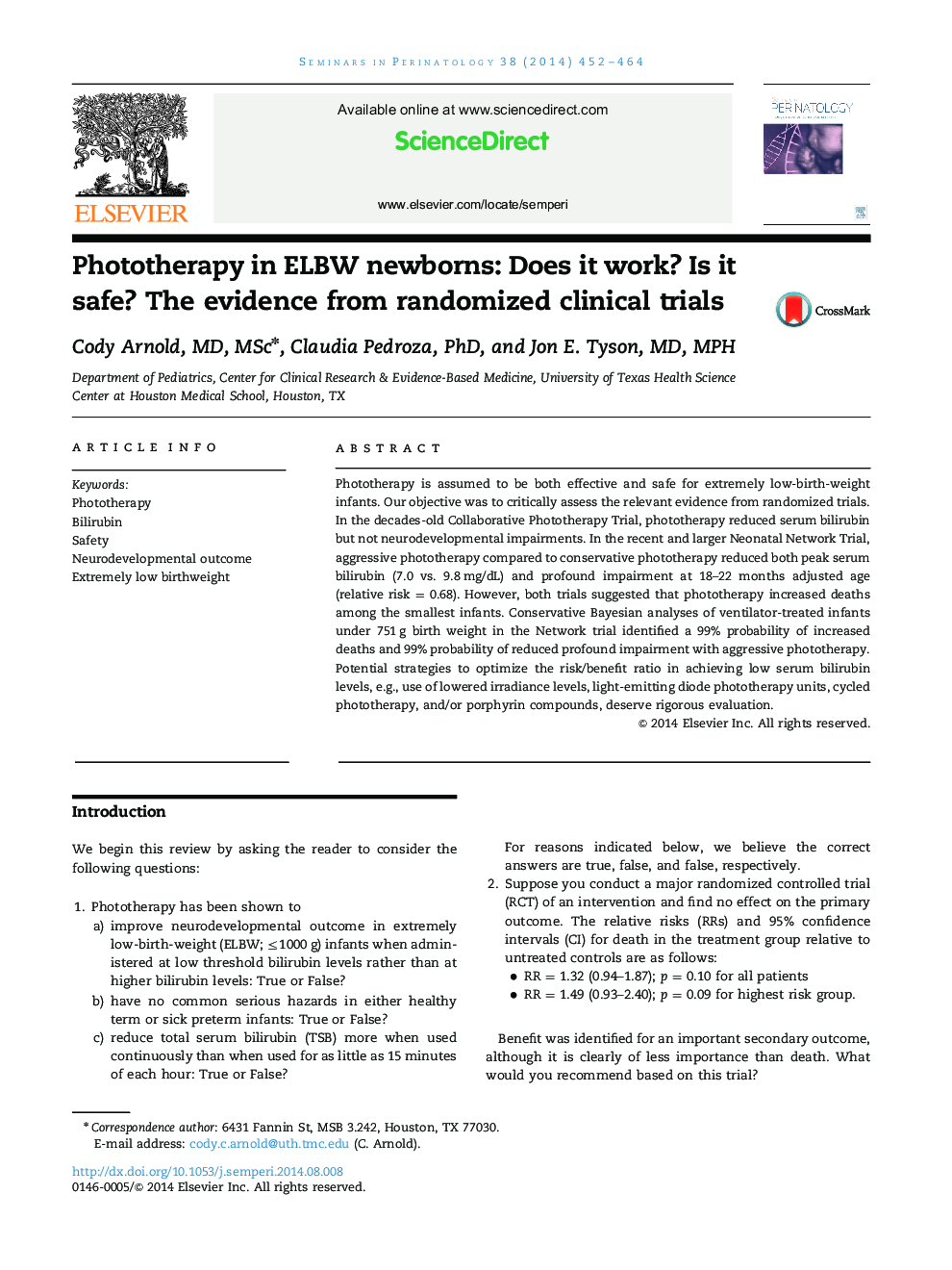| Article ID | Journal | Published Year | Pages | File Type |
|---|---|---|---|---|
| 3836383 | Seminars in Perinatology | 2014 | 13 Pages |
Phototherapy is assumed to be both effective and safe for extremely low-birth-weight infants. Our objective was to critically assess the relevant evidence from randomized trials. In the decades-old Collaborative Phototherapy Trial, phototherapy reduced serum bilirubin but not neurodevelopmental impairments. In the recent and larger Neonatal Network Trial, aggressive phototherapy compared to conservative phototherapy reduced both peak serum bilirubin (7.0 vs. 9.8 mg/dL) and profound impairment at 18–22 months adjusted age (relative risk = 0.68). However, both trials suggested that phototherapy increased deaths among the smallest infants. Conservative Bayesian analyses of ventilator-treated infants under 751 g birth weight in the Network trial identified a 99% probability of increased deaths and 99% probability of reduced profound impairment with aggressive phototherapy. Potential strategies to optimize the risk/benefit ratio in achieving low serum bilirubin levels, e.g., use of lowered irradiance levels, light-emitting diode phototherapy units, cycled phototherapy, and/or porphyrin compounds, deserve rigorous evaluation.
